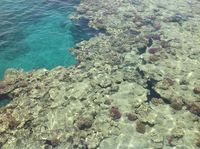Educational Media goes VR: Stanford Ocean Acidification Experience

The Stanford University released a special kind of digital educational media: a virtual reality project that shows the consequences of the climate changes for coral reefs. The simulation lets the students experience a 360° animated 3D world in heavy traffic where they discover the usually invisible carbon dioxide (CO2) in form of flying molecules.
After that the students get placed in the middle of the ocean where they observe the effects of the released molecules. The story or rather the lesson is accompanied by a narrator explaining the processes.
The development and realization of the project took two years and requires a HTC Vive VR headset. Jeremy Bailenson, founding director of the Virtual Human Interaction Lab, described the program accordingly: “Your’re not watching something, you’re doing it.”
Editorial team (sz)
Sources
Photo credit: Coral reef by TONINOPIRISI / CC0
Information sources: thejournal.com, youtube.com (VR lesson tested)